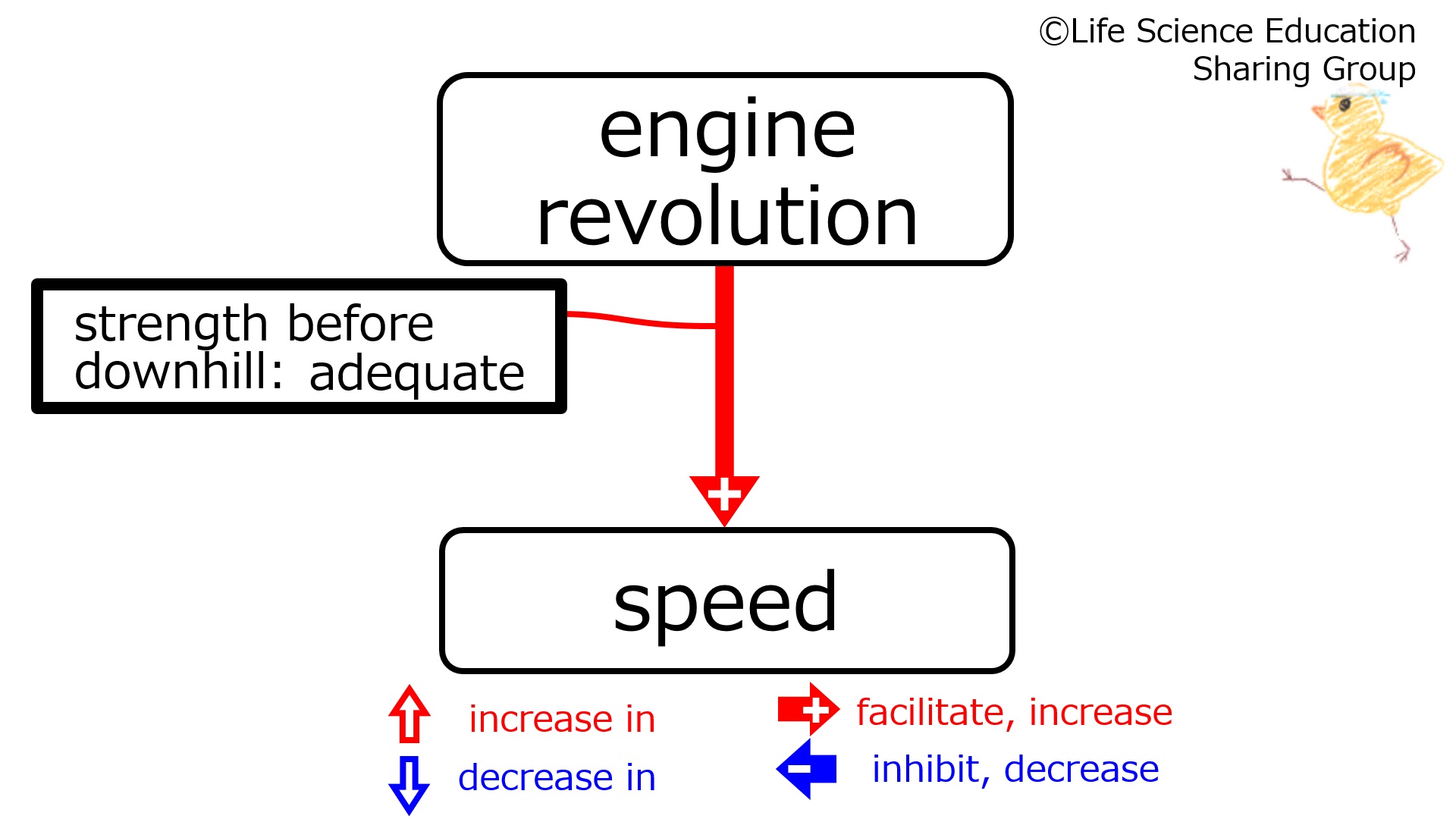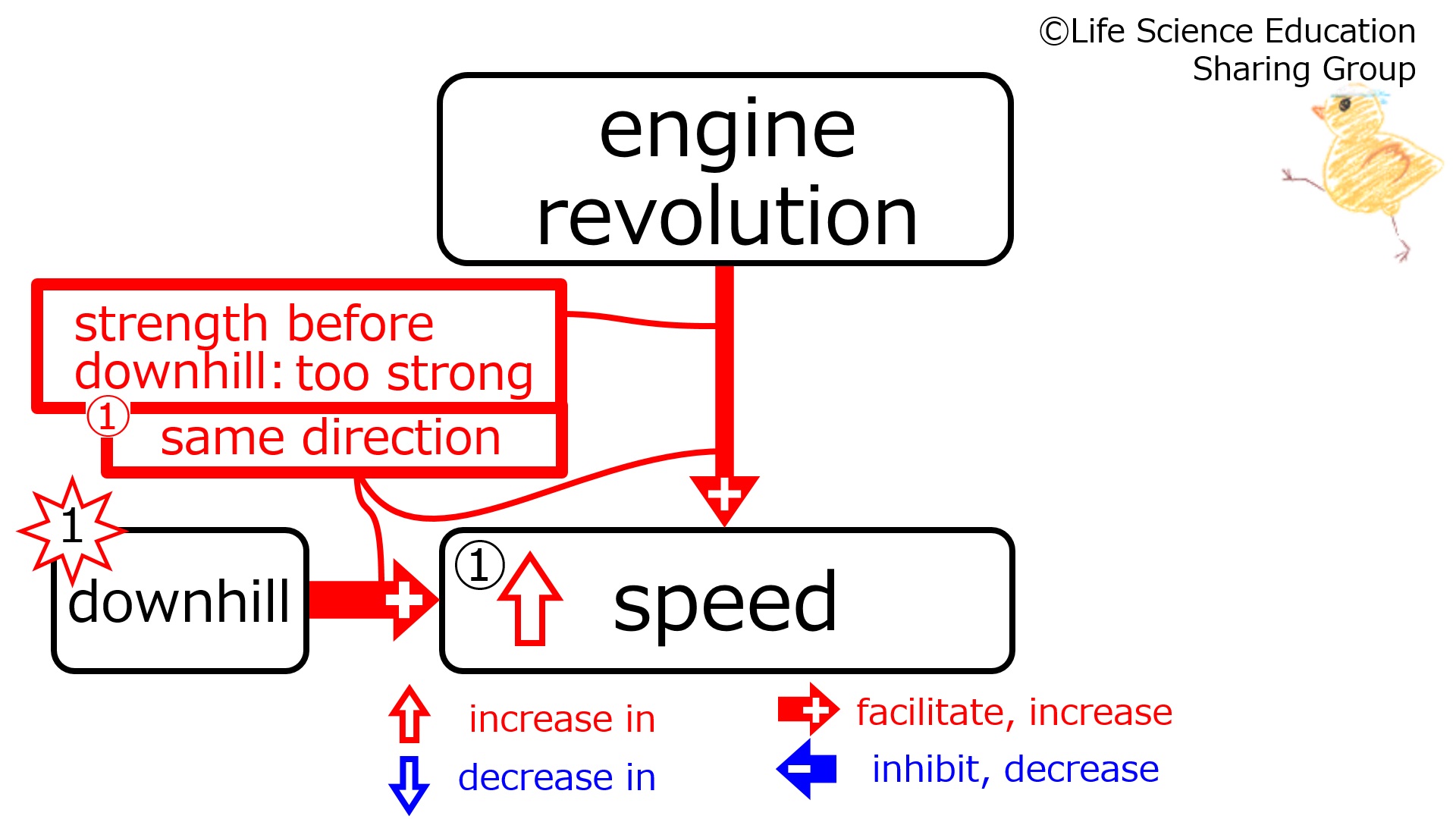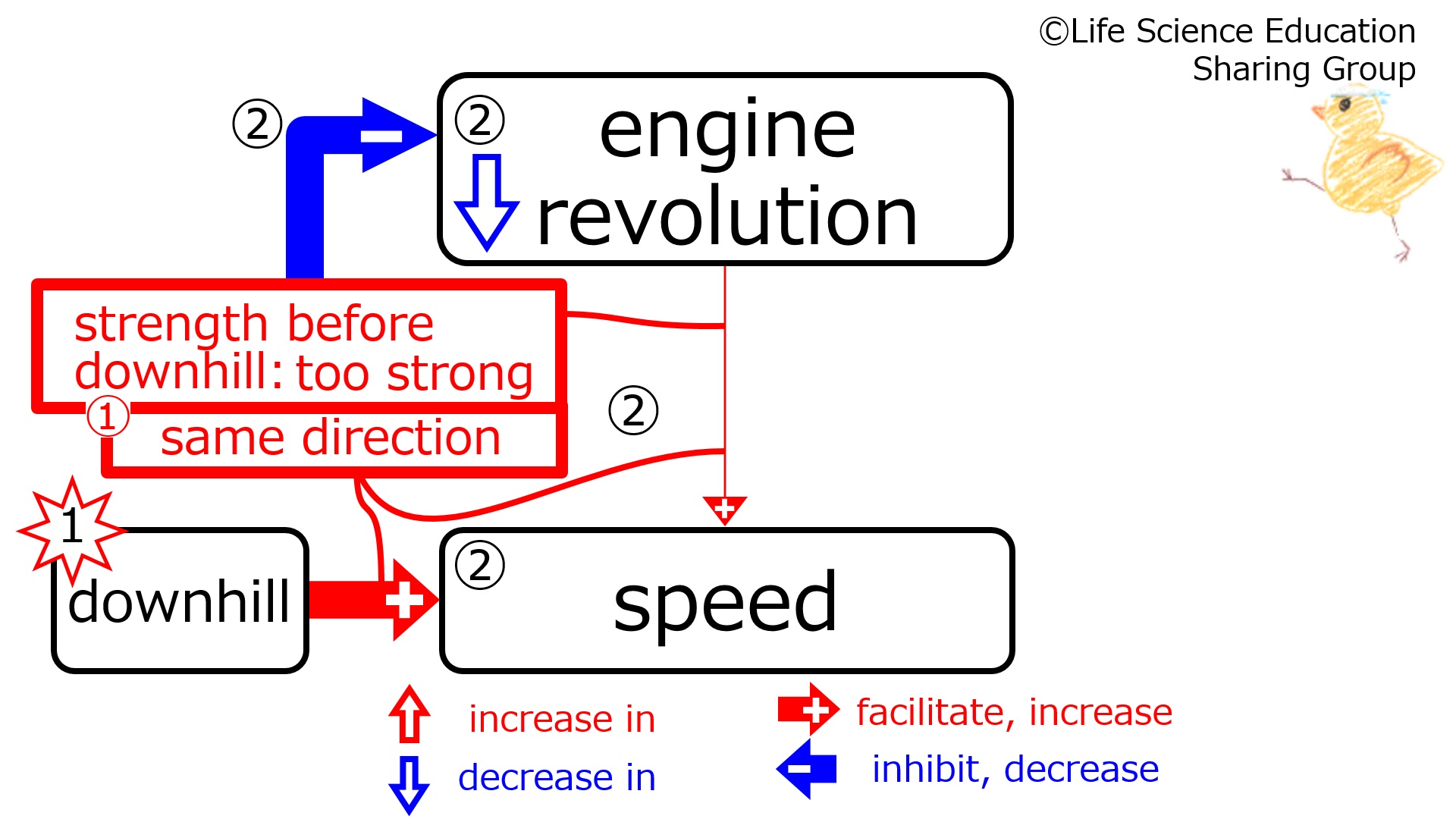Introduction/NegativeFeedback(MiddleLevel)/CarDownhill
| At a downhill, the speed increases, and negative feedback decreases the engine revolution. |
Before an downhill (at a flat baseline), we will make the assumption that the car is in homeostasis with adequate strength of the speed-increasing effect of engine revolution as well as normal speed.
Step 1: With downhill, car speed increases.
This is in the same direction as the speed-increasing effect of the engine revolution. Thus, although the strength of the speed-increasing effect of engine revolution was adequate before downhill (at flat baseline), this strength is now too strong (red) to reverse the high speed produced by downhill. Control by negative feedback is needed.
Step 2: With the strength of the speed-increasing effect of the engine revolution before downhill (at flat baseline) being too strong (red), the negative feedback decreases (blue) the engine revolution.
The speed-increasing effect of engine revolution becomes weaker, which decreases the speed. This will lead to a reverse in the increased speed because of downhill, decreasing it towards normal (baseline) speed.



